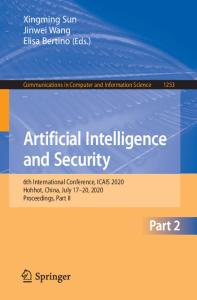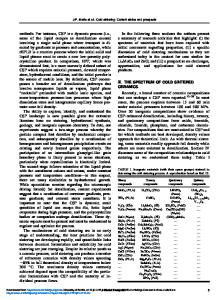Immunotherapy in nonsmall-cell lung cancer: current status and future prospects for liquid biopsy
- PDF / 1,705,894 Bytes
- 12 Pages / 595.276 x 790.866 pts Page_size
- 53 Downloads / 407 Views
REVIEW
Immunotherapy in nonsmall‑cell lung cancer: current status and future prospects for liquid biopsy Elena María Brozos‑Vázquez1,2 · Roberto Díaz‑Peña2,3,4 · Jorge García‑González1,2,3 · Luis León‑Mateos1,2,3 · Patricia Mondelo‑Macía2 · María Peña‑Chilet5,6,7 · Rafael López‑López1,2,3 Received: 20 May 2020 / Accepted: 14 October 2020 © Springer-Verlag GmbH Germany, part of Springer Nature 2020
Abstract Immunotherapy has been one of the great advances in the recent years for the treatment of advanced tumors, with nonsmallcell lung cancer (NSCLC) being one of the cancers that has benefited most from this approach. Currently, the only validated companion diagnostic test for first-line immunotherapy in metastatic NSCLC patients is testing for programmed death ligand 1 (PD-L1) expression in tumor tissues. However, not all patients experience an effective response with the established selection criteria and immune checkpoint inhibitors (ICIs). Liquid biopsy offers a noninvasive opportunity to monitor disease in patients with cancer and identify those who would benefit the most from immunotherapy. This review focuses on the use of liquid biopsy in immunotherapy treatment of NSCLC patients. Circulating tumor cells (CTCs), cell-free DNA (cfDNA) and exosomes are promising tools for developing new biomarkers. We discuss the current application and future implementation of these parameters to improve therapeutic decision-making and identify the patients who will benefit most from immunotherapy. Keywords Lung cancer · NSCLC · Liquid biopsy · Immunotherapy · CTC · cfDNA
Introduction Lung cancer is currently the most frequently diagnosed malignant tumor, representing the leading cause of cancer death worldwide [1]. Nonsmall-cell lung cancer (NSCLC) accounts for approximately 85% of lung malignancies, and Elena María Brozos-Vázquez and Roberto Díaz-Peña Contributed equally.
approximately 70% of them are diagnosed with a nonsquamous histology such adenocarcinoma or large cell carcinoma [2]. More than 60% of newly diagnosed patients present locoregional or distant metastases at the time of detection. Over the past 20 years, the treatment landscape and prognosis of advanced NSCLC patients have changed [3]. First, the introduction of target therapies for oncogene-addicted tumors improved patient survival outcomes. However, only
* Elena María Brozos‑Vázquez [email protected]
4
Facultad de Ciencias de la Salud, Universidad Autónoma de Chile, Talca 3460000, Chile
* Roberto Díaz‑Peña [email protected]
5
Bioinformatics in Rare Diseases (BiER), Centro de Investigación Biomédica en Red de Enfermedades Raras (CIBERER), 41013 Sevilla, Spain
6
Clinical Bioinformatics Area, Fundación Progreso y Salud (FPS), Hospital Virgen del Rocío, 41013 Sevilla, Spain
7
Institute of Biomedicine of Sevilla (IBiS, CSIC, Universidad de Sevilla), 41013 Sevilla, Spain
1
Department of Medical Oncology, Complexo Hospitalario Universitario de Santiago de Compostela, 15706 Santiago de Compostela, Spain
Data Loading...











